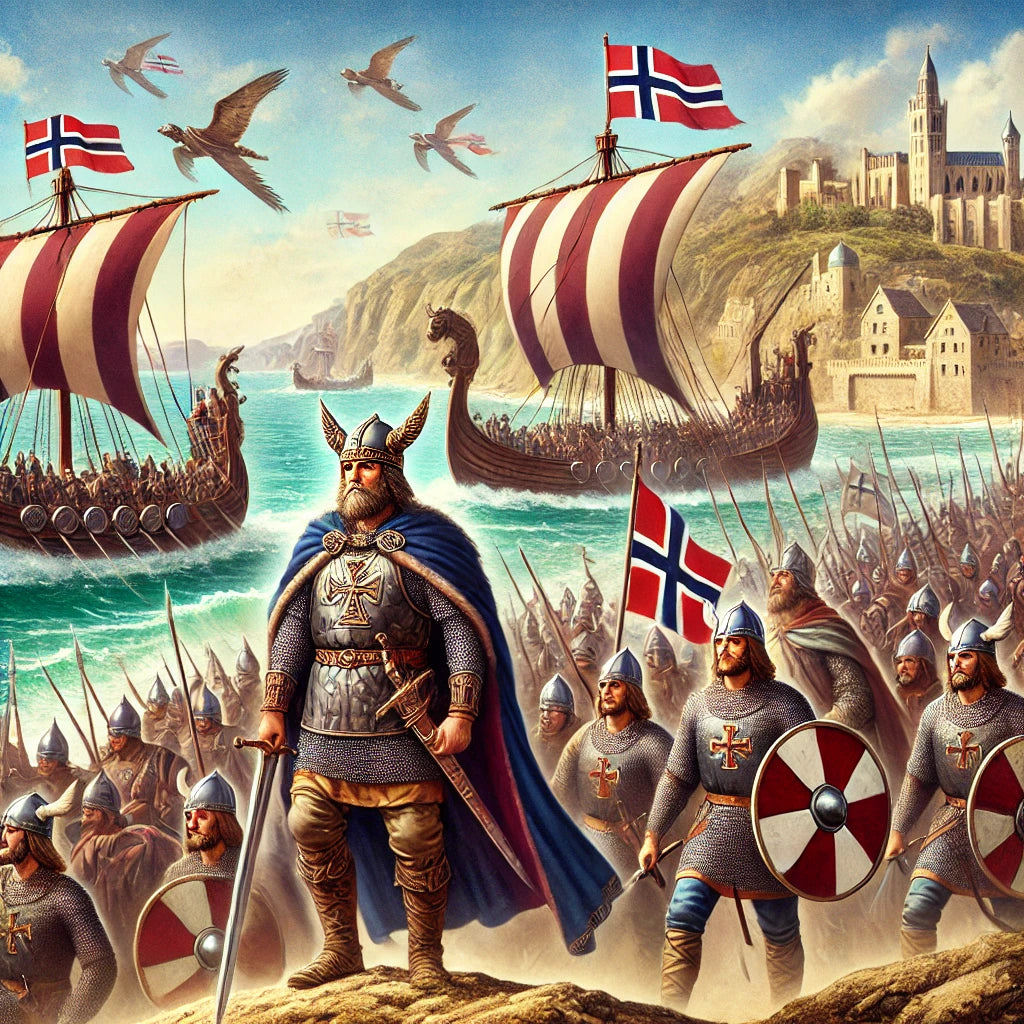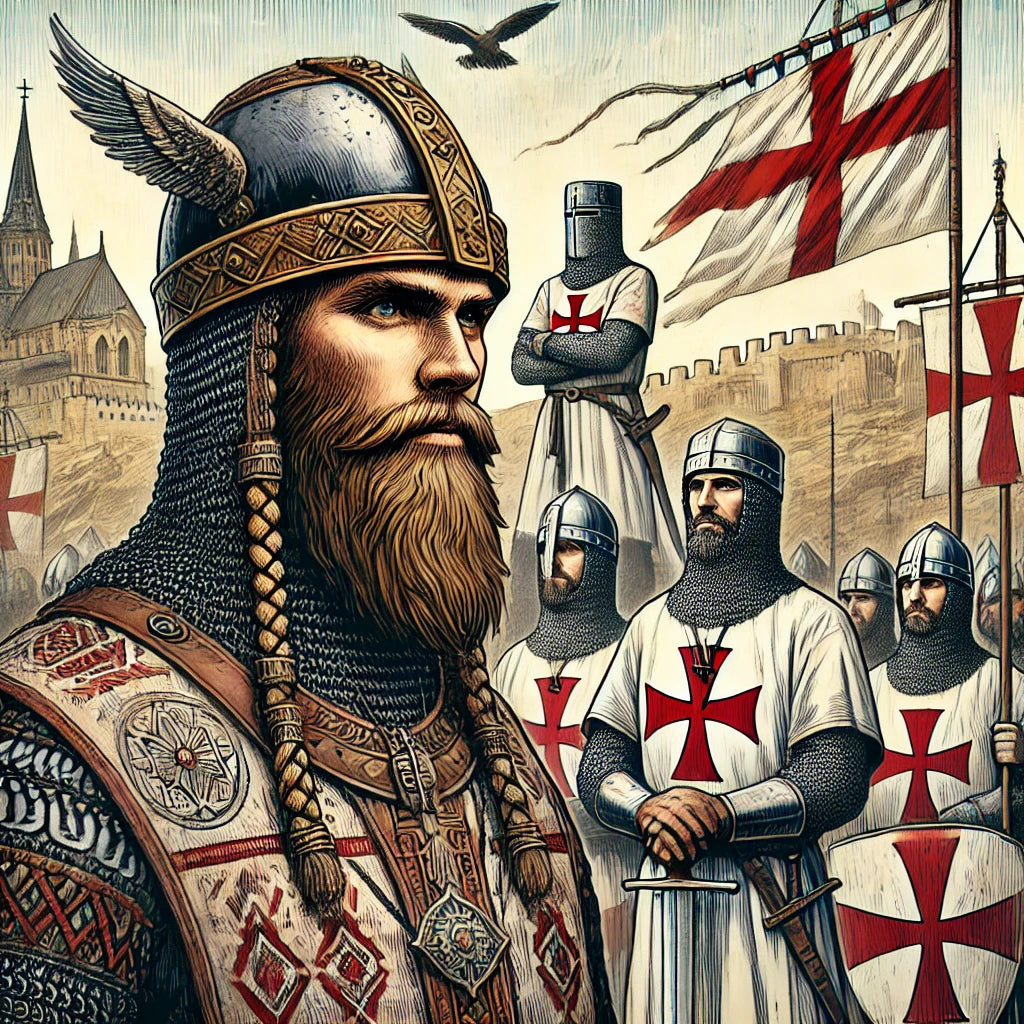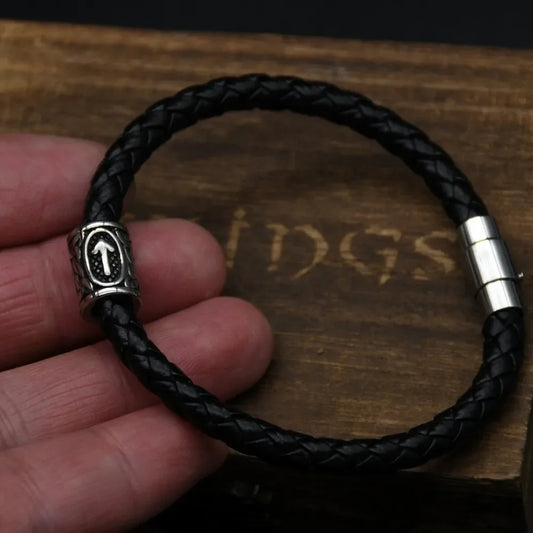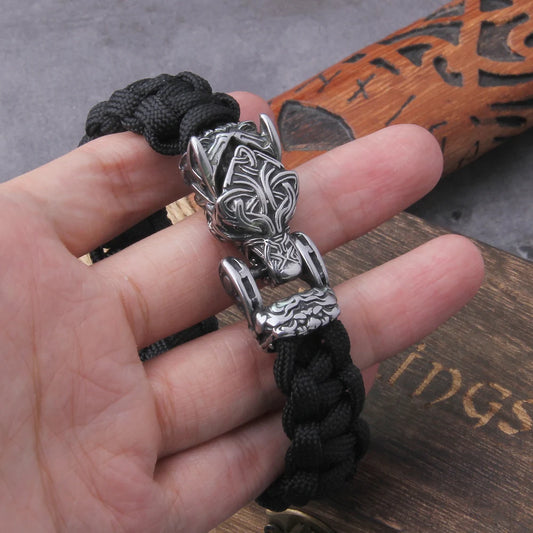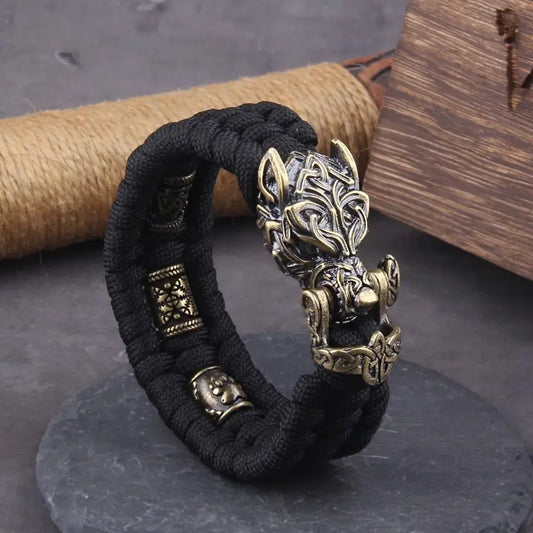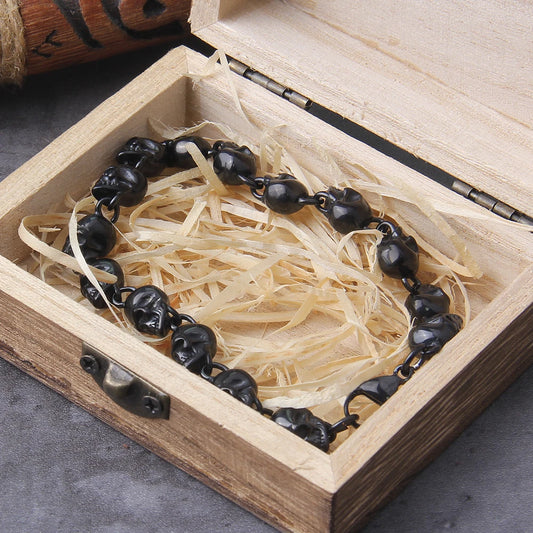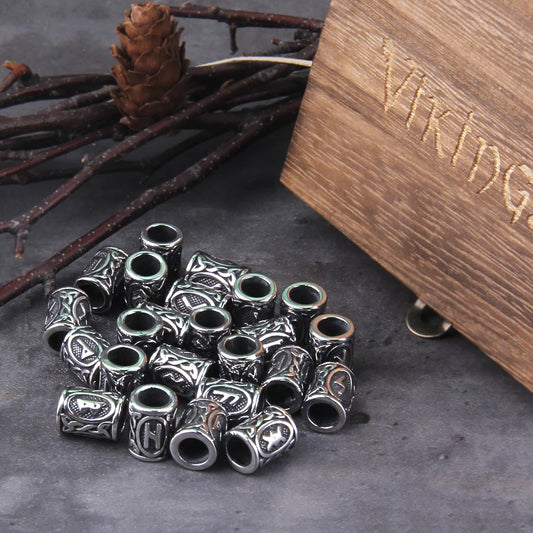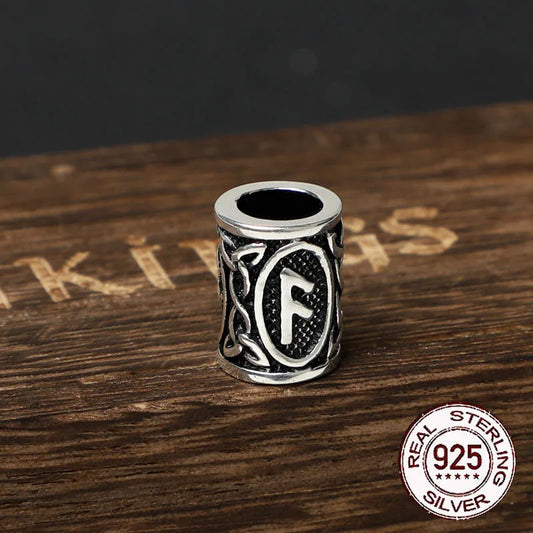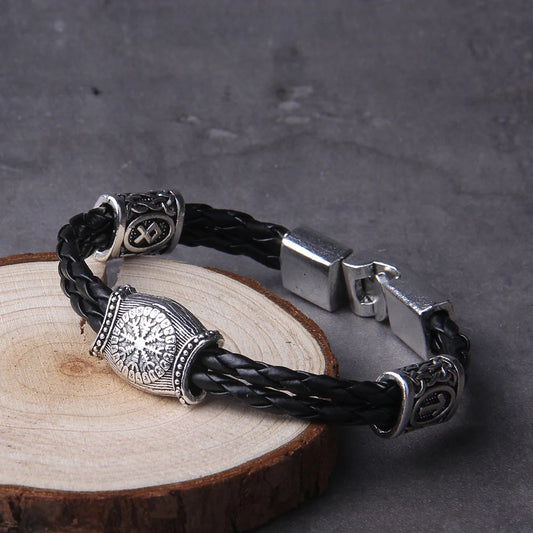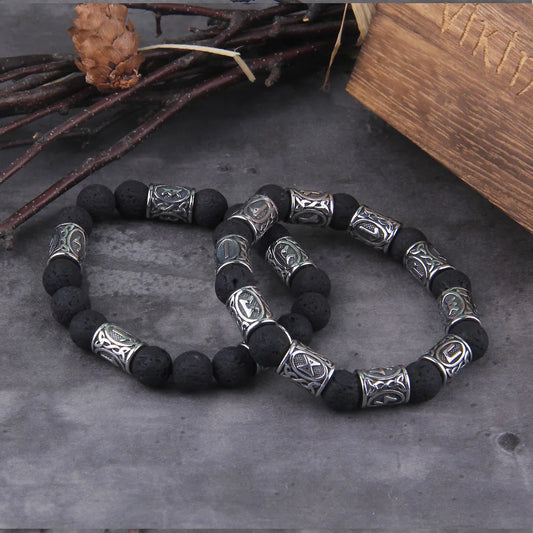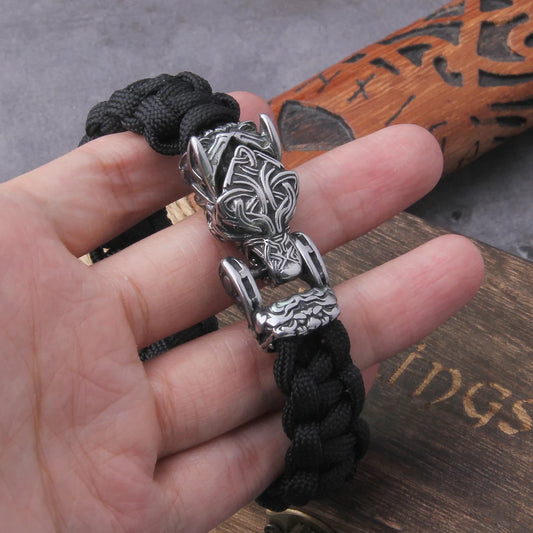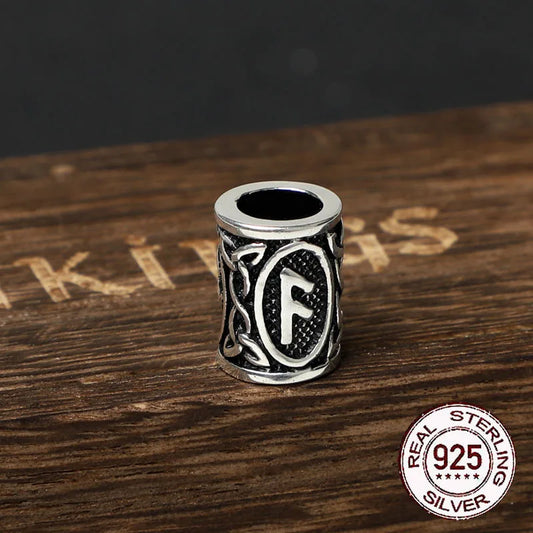Harald I of Norway, known as Harald Fairhair (Old Norse: Haraldr Halfdanarson and Haraldr Hárfagri; Norwegian: Harald Hårfagre) (c. 850 - c. 933), was king of Norway from 872 to 933. He was the son of Halfdan the Black and Ragnhild Sigurdsdatter.
He was the first king of Norway. Through conquests, he managed to unify a group of small rival kingdoms and extended his dominion over Scotland, the Hebrides, Orkney and Shetland. His persecution of his enemies led to the Norwegian settlement of Iceland.
The Saga of Harlad Fairhair
Succeeding his father Halfdan the Black Gudrœdsson (son of Gudrœd Halfdanson the Magnificent or the Hunter, king of Vestfold; tradition links them to the Swedish Ynglingar), when he was only ten years old, he ascended the throne of several small and scattered kingdoms. He had either conquered them or inherited them, and these kingdoms were mainly in the south-east of Norway.
According to the Sagas account, it was because of the disdain of Gyda, the daughter of a neighboring king, Eric of Hordaland, that Harald vowed not to cut or comb his hair until he was the sole king of Norway.
The daughter of Eric of Hordaland refused to marry him until Harald was king of all Norway. It takes him ten years. After that, he changed the epithet "fuzzy" or "the dishevelled" for the one under which he is then known, Harald with the Beautiful Hair.
In 866, he began a series of conquests over the many small kingdoms that then made up Norway. Between 872 and 885 (opinions differ), after a great victory at Hafrsfjord near Stavanger, he found himself king of the entire country. The monument Swords on the Rocks commemorates his victory.
However, his reign was threatened by dangers from outside, since many of his opponents had found refuge not only in Iceland, which had just been discovered, but also in the Orkney, Shetland, Hebrides and Faroe archipelagos and even in Normandy, Scotland and Ireland.
From these winter quarters, they sailed to harass Norway as well as the whole of Northern Europe. In addition to these enemies from outside, there were also those at home who were unhappy with Harald's desire to raise taxes on their lands. Later, he was forced to make an expedition to the west to take control of Orkney to force the Vikings there to leave for Iceland.
The last part of his reign is disturbed by the struggles between his many sons. He gave them fiefs to administer, but this arrangement did not put an end to their quarrels: they would continue during the following reign.
When he became old, he passed on the supreme power to his favorite son Erik Bloodaxe, whom he wanted to make his sole successor. This went against the law of succession in force at the time, which stated that all heirs should receive equal shares of the inheritance.
When he died, he had eight wives or concubines and twenty-three children. Twelve of these children became kings, including two of all Norway. He is the grandfather of Harald II of Norway with the grey pelt.
Harald Fairhair Genealogy
On his father side Harald was inserted into the Ynglingeætten, the Swedish legendary kings based in Uppsala and ultimately claimed to be descended from the Aesir Gods. On his mother's side, according to one legend, he was descended from another legendary king, the Danish Sigurd Snake-in-the-Eye and thus his father, Ragnar Lothbrok, which would, however, be chronologically impossible or at least close to improbable.
The sources agree that his father was Halvdan Svarte. According to Are Frode Halvdan Svarte may have lived on Ringerike or Hadeland and on his father's side descended from the Ynglingeætten.
According to Egil's saga Harald may be from "east in the Viken" (i.e. Eastfold), since according to this saga he had inherited the area. Fagrskinna mentions no connection to the Ynglingeætten.
The poem Nóregs konungatal nok with Sæmund Frode as source states that Harald's ancestors held power in Sogn Thus the only certain name is Halvdan Svartes. Some scholars have believed that he was also king of Westfold and Oppland, but the information may have arisen in the 13th century, to legitimize the claim of the Fairhair set to Viken.
Acording to fairy-tale literature, the name Vingulmark may have originated at the time when Halvdan Svarte was at war with King Gandalf.
There is much uncertainty about Harald Fairhair's mother. According to Fagrskinna and Heimskringla, Halvdan Svarte was married to Ragnhild Haraldsdatter and Ragnhild Sigurdsdatter.
An appendix to Fagrskinna lists Halvdan's second wife as Helga Dagsdatter from Hadeland. In Landnamabok, Tora is listed as Halvdan's first wife. Snorre thought Ragnhild Sigurdsdatter was the daughter of Sigurd Hjort, while the author of Fagrskinna thought she was the daughter of the mythical Sigurd Snake-in-the-Eye Ólafía Einarsdóttir considers the account in Fagrskinna of Ragnhild Sigurdsdatter as Fairhair's mother to have been constructed from King Håkon Håkonsson's desire to link the Norwegian royal family to the Danish Skjoldungs for grand political reasons.
Instead, she believes Fairhair's mother was Ragnhild Haraldsdatter. As the daughter of King Harald Goldbeard of Sogn, her son Harald would inherit power in Sogn through her.
The Welsh chronicle Vita Griffini Filii Conani of 1137 claims that Rollo of Normandy was the brother of Harald Fairhair although this is not confirmed from other sources.
Descendants
According to Fagrskinna Harald Fairhair was married to Gyda Eriksdatter from Hordaland; but the Hadelands-transcription of Fagrskinna has moved the account to its native region. Here he marries Ragna Adilsdatter on Toten.
Harald Fairhair is said to have had many children with different women. The sagas do not agree on numbers or names, and the family relationships are disputed by historians. Snorre writes that "King Harald married off most of his daughters to his jarls inland, and great lineages have come from there."
However, he mentions only two daughters:
Ålof Årbot Haraldsdatter, married to Tore jarl of Møre. Their daughter Bergljot Toresdatter was married to Sigurd jarl and mother of Jarl Håkon.
Ingebjørg Haraldsdatter, married to Halvdan jarl, apparently in Hålogaland.
The sons' relationship is more complicated. A contemporary Øyvind skjaldespilder (Skjaldefordærver) says in his poem about King Harald's youngest son Håkon the Good that Håkon was to meet eight brothers in Valhalla.
Historia Norvegiæ, on the other hand, claims that King Harald had 16 sons, all named. Ågrip from the 1190s lists 20 sons, and this list is repeated in Fagrskinna. Snorre, who wrote about that time, also mentions 20 sons, but gives other names than Ågrip.
From Øyvind Skjaldespilder's count of nine brothers in all, one might suggest a list in which only the eldest, Erik, and the youngest, Håkon, are certain historical persons:
- Erik Bloodaxe
- Halvdan Svarte - not to be confused with his grandfather Halvdan Svarte
- Olav Geirstadalf
- Bjørn Farmand
- Sigurd Rise
- Gudrød Glans
- Ragnvald Retben - supposedly burned by his half-brother Erik Bloodaxe for being a seer, along with 80 other wizards, at his father's bidding
- Halvdan Højben
- Haakon the Good
Most of Fairhair's sons lost their lives while their father was alive. Apart from Erik and Håkon - the eldest and the youngest - Sigurd Rise is the only one who may still have been alive at the time of his father's death.
According to Snorre, Gudrød Glans was raised by the bard Tjodolf from Kvinesdal, referring to a verse: "Violently the wave breaks in the surf at Jæren." The verse is addressed to "good Gudrød"; but Gudrød Glans was no king.
On the other hand, one of Erik Blodøkses sons was called Gudrød Glans, and his name may by mistake have appeared on Snorre's list of Fairhair's sons.
On the older lists of King Harald's sons, however, the name Sigtrygg or Tryggve appears, and this is more likely, for he would have a grandson named after him; namely, the one who became the father of Olav Tryggvason.
As the sons grew up, King Harald had to let them participate in the governance of the country, which Snorre tells about in detail. However, no contemporary sources confirm this; on the contrary, all tradition agrees that Harald Fairhair did not divide the country between his sons at all, but rather left the power to the eldest, Erik Bloodaxe.
This deviated from common Norse practice, where all the king's sons, born in and out of wedlock, were considered as heirs. One might suspect that Erik is presented as sole king after his father, because in Snorre's time there was a dispute over sole kingship. But when Erik Bloodaxes sons came to power, there was only one, Harald Gråfeld, who was given royal power. Only with Harald Hårderåde did the practice of several co-kings return.
Only Snorre tells about the children's mothers, and he gives Ragnhild, daughter of King Erik of Jutland, as the mother of Erik Bloodaxe. She must have died three years after his birth and is not known in contemporary sources. Perhaps Erik's name led Snorre to assume a grandfather of the same name, and according to tradition Blodøkse also had a daughter whom he named Ragnhild (and who married a son of the Earl of the Orkneys).
Snorre has interpreted Torbjørn Hornkløve's Haraldskvad as meaning that Harald Fairhair married women from all parts of Norway. This is the verse in which it is stated that the king wooed mothers from Rogaland, Hordaland, Hedmark and Hålogaland, as if he sent all these women away when he married Ragnhild.
In that case he had them before the battle of Hafrsfjord. On the contrary, Snorre writes that it was only after the battle that he sent for Gyda Eriksdatter, who had promised to marry him when he became sole king of Norway.
Before the battle Harald was - according to Snorre - married to Åsa, daughter of the earl Håkon Grjorgardsson. Afterwards, however, Snorre had the king marry two royal daughters from Opland and also the daughter of the giant Svase from Dovre.
This legend is a pure copy of Ågrip. There is also a poem by Bishop Bjarne Kolbeinson of the Orkneys, who wrote that "the fine girl made Harald dizzy, so that he thought she was bright as the sun".
The girl's name was Snefrid, which is a pure fairytale name that appears in Norwegian folk tales just like the name Snow White.
Snefrid won King Harald over with a potion, so that he forgot all his duties, and even after her death he was so bewitched that he sat over her corpse for three years, until Torleif the Wise made the dead woman collapse in decay, and the king came to himself again.
A legend was also told at the time about Charlemagne, that he was bewitched for years by a dead woman.
Harald Fairhair's Burial site
Harald Fairhair died "straw dead". Snorre writes: "King Harald died of old age in Rogaland, and he was buried in Haugar near Karmsund. There is a church in Haugesund, and northwest of the cemetery itself is Harald Fairhair's mound.
West of the church is King Harald's tombstone, which lay over his grave in the mound; the stone is thirteen and a half feet long and nearly two cubits wide.
In the middle of the mound was King Harald's burial place; one stone was placed at the head and another at the feet, and over it lay the great stone, and many stones were placed on both sides under it."


